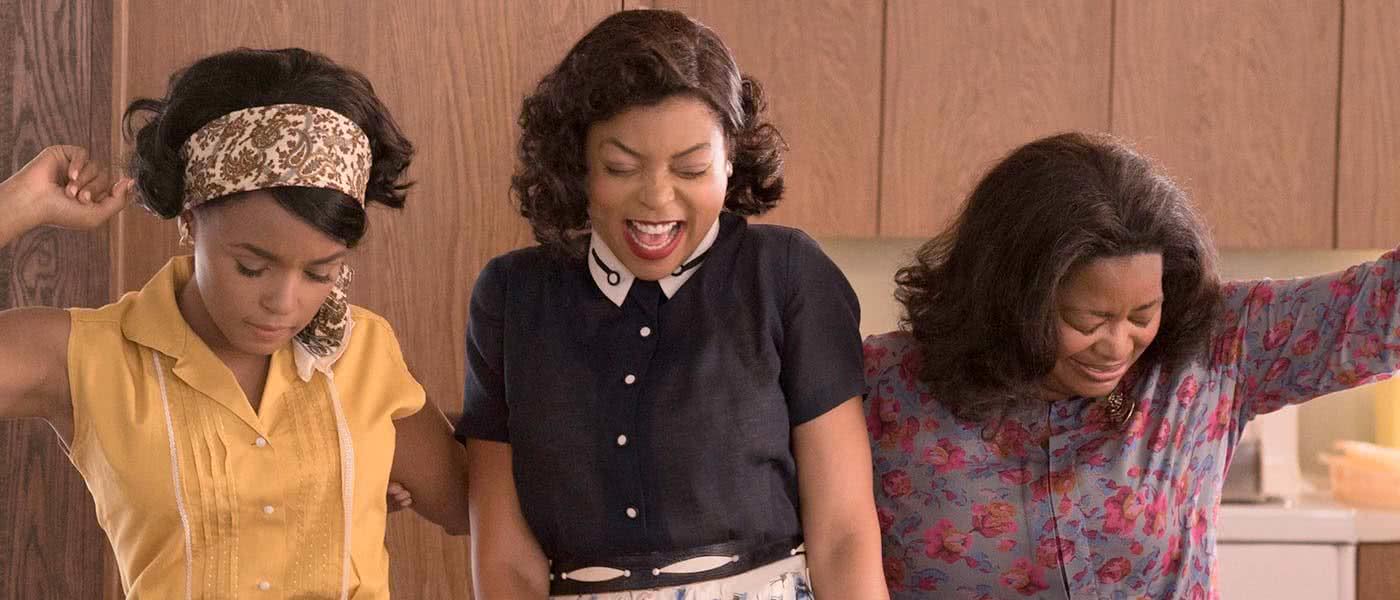Hidden Figures is ‘a remarkable story portrayed in utterly unremarkable fashion’ says MacDara Conroy
Hidden Figures is a remarkable story portrayed in utterly unremarkable fashion. Nuance, subtlety, originality: they’re not to be found in the playbook of writer-director Theodore Melfi, who’s constructed a film almost entirely from cliché. The kind of cliché lampooned by the Wayans brothers more than two decades ago, no less. And the results ultimately do disservice to the incredible women to whom the film claims to pay tribute.
If you thought that titular wordplay was heavy-handed, that’s nothing compared to the schmaltzy opening montage depicting young maths whiz Katherine Johnson as the chosen one, plucked from obscurity to join a school for gifted children. It seems too good too be true, and it probably is, as it almost goes without saying that the facts here have been fudged to fit a greater narrative.
The film skips forward to 1961, in the midst of the civil rights movement, as the adult Katherine (Taraji P Henson) catches her lifts to work with fellow mathematicians Mary Jackson (Janelle Monáe) and Dorothy Vaughan (Octavia Spencer). The trio, anachronistically self-aware even accounting for their smarts, work at NASA in the Jim Crow South — which means navigating racism to varying degrees pretty much everywhere bar their own homes.
Racism is the invisible hand that blocks Jackson from qualifying as an engineer despite her obvious aptitude (in reality, she became NASA’s first black female engineer three years prior). It prevents Vaughan from being recognised for promotion (the real Dorothy Vaughan was promoted to supervisor in 1949). And it throws numerous stumbling blocks in the path of Johnson when she’s yet again plucked from obscurity, this time to crunch the numbers for the Mercury programme that sent John Glenn into orbit.
 Jackson and Vaughan are relegated to subplots as Hidden Figures lumps All The Symbolism on Johnson’s story. Dehumanised both figuratively (as a ‘computer’, before the IBM mainframe came along) and literally (a separate, not equal coffee pot soon shows up in the office), she’s the one who solves the problems that stump her supposed betters; who gets the rousing mid-film exclamation of righteous anger when her frustration boils over; who slowly earns the grudging respect of her white collar, white-skinned co-workers. She’s also the one shown having much of a life beyond the job, raising three daughters and being courted by a handsome National Guardsman (Mahershala Ali).
Jackson and Vaughan are relegated to subplots as Hidden Figures lumps All The Symbolism on Johnson’s story. Dehumanised both figuratively (as a ‘computer’, before the IBM mainframe came along) and literally (a separate, not equal coffee pot soon shows up in the office), she’s the one who solves the problems that stump her supposed betters; who gets the rousing mid-film exclamation of righteous anger when her frustration boils over; who slowly earns the grudging respect of her white collar, white-skinned co-workers. She’s also the one shown having much of a life beyond the job, raising three daughters and being courted by a handsome National Guardsman (Mahershala Ali).
If Johnson’s the focus and the other women are side stories, that makes the white cast no more than tropes. Space programme director Kevin Costner is the stern-but-fair white saviour who doesn’t see colour; the sainted John Glenn (Glen Powell) also gets this treatment. Kirsten Dunst is the middle manager who frustrates Vaughan’s ambitions because that’s just “the way things are”. Jim Parsons’ head engineer can barely hide his contempt for Johnson as a woman, as a person of colour, as a mere ‘computer’. Everyone is fine in their allotted roles. The roles themselves are the problem.
Perhaps it’s asking too much of a mainstream Hollywood drama to give us the true, unvarnished stories of Johnson, Jackson and Vaughan, and the many other African-American women who helped build the US space programme (as recognised in the book by Margot Lee Shetterly from which this film is adapted) without shedding their complexities to fit them into a simplified, crowd-pleasing formula, via Melfi’s screenplay with Allison Schroeder.
Still, the finished product remains the poorest kind of social allegory: it’s safe. And it’s worth considering for which audience it was made just so.
Hidden Figures opens nationwide on Friday February 17th


